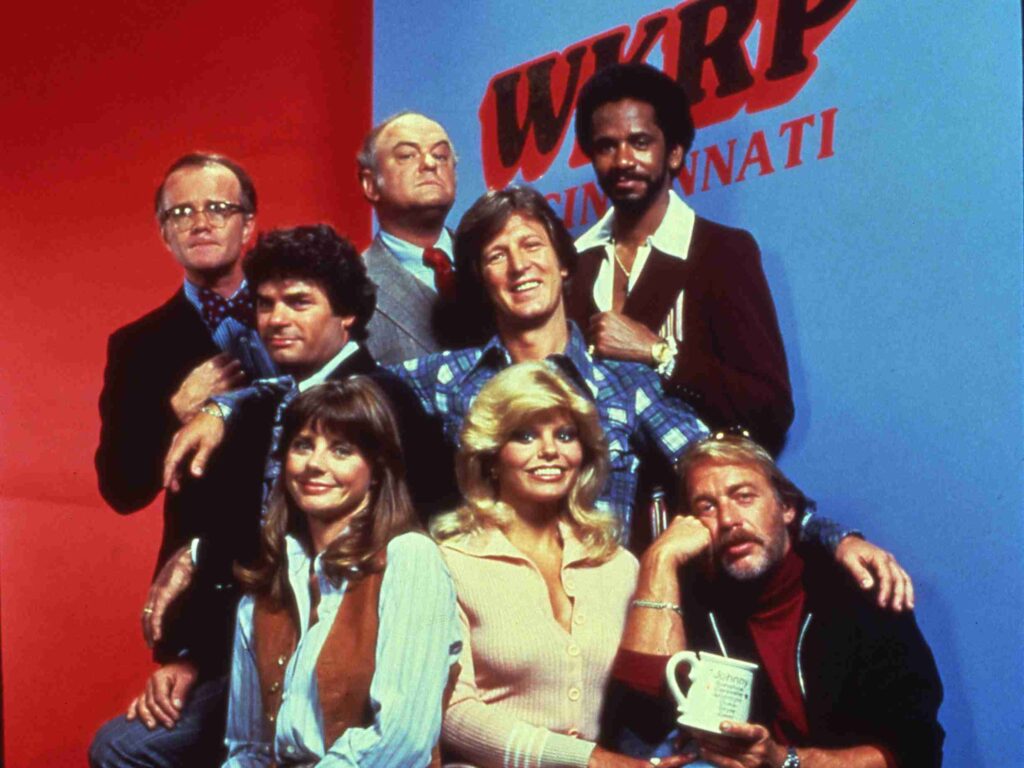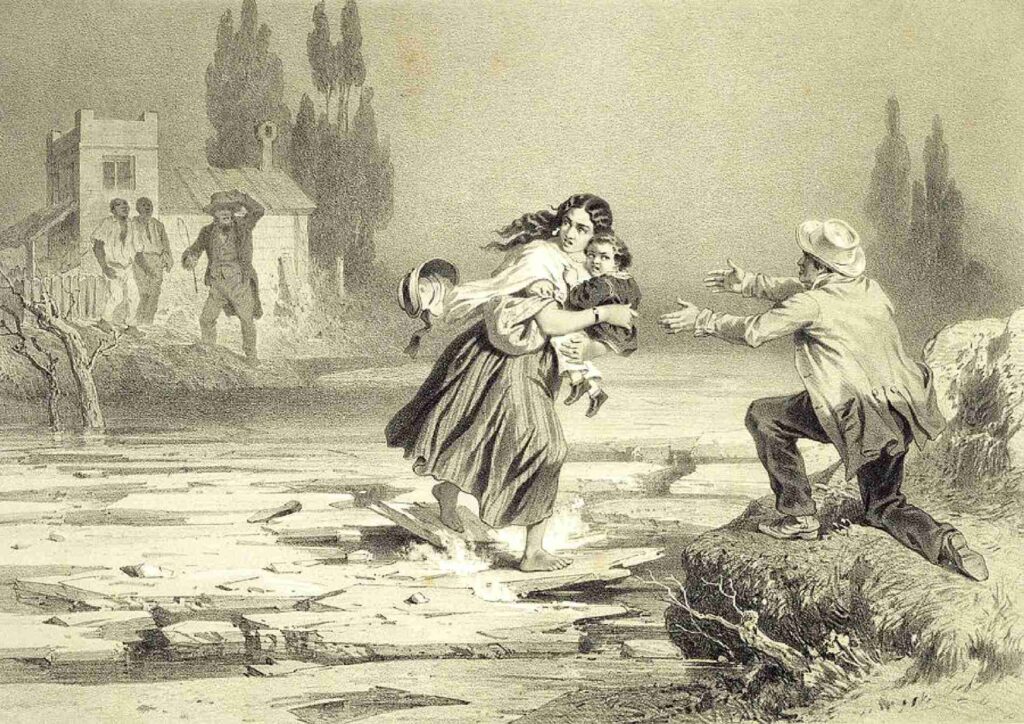When Hugh Wilson had worked in advertising for a radio station in Atlanta (the one in Georgia) he found himself working with a bunch of interesting individuals. Then, in the 1970s, when trying to come up with an idea for a new sitcom, he thought of his experiences, and came up with an idea: A struggling radio station … a lot of wacky characters … misadventure around every corner … Suddenly, the spark of inspiration hit him and before long, he began to put his ideas into reality, and a new sitcom was born, taking place at a radio station called C-R-A-P … thankfully, before it aired, that changed to W-K-R-P.
WKRP in Cincinnati
For 90 episodes over four seasons (not including its eventual reboot, The New WKRP in Cincinnati) WKRP in Cincinnati aired telling the exploits of a radio station run by Arthur (and maybe his mother) featuring disc jockeys Dr. Johnny Fever, Venus Flytrap, and Bailey Quarters with Les Nessman in news and weather, alongside Station Manager Gary, with Herb in sales, and the always lovely secretary Jennifer.
Every episode (more or less) proved to be a hit for the TV station, at least until they changed the airdate and suddenly found fewer people watching. The plots mostly revolved around wacky hijinks of the radio station DJs, occasionally dealt with social issues in a funny and non-preachy way. The characters, while often stereotypical by design, also featured some depth, which helped to make them seem relatable. Every year the show was up for numerous Emmy awards, yet for some reason only won once … for cinematography.
While it never played a central role, the music was often a subliminal force in the show, and sometimes it was more than that. For example, after releasing the song “Call Me”, Debbie Harry (Blondie) was a bit dismayed at the lack of commercial success she (and her song) was getting. However, after the song was used in an episode of WKRP in Cincinnati, sales skyrocketed. To this day she, and her record label, Chrysalis Records, state the reason for the song’s (as well as the album Parallel Lines’s) success was its use on WKRP.
WKRP In Cincinnati has made notable history (or, at least television history) a couple of times. The first time was during it’s first season (episode 7) when, in order to boost the radio station’s reputation, they came up with an ingenious publicity stunt just in time for Thanksgiving: dropping live turkeys out of a helicopter. As you would expect, this plan backfired as a number of live turkeys plummeted to their gruesome death (live, with commentary from Les Nessman, among others.) This episode has consistently been featured numerous “Funniest Television Episodes Ever” lists. It is also, I hate to say this, based on a true story that happened to show creator Hugh Wilson when he worked in Atlanta.
The other historically notable episode occurred the following season. And this episode almost didn’t air in Cincinnati, itself. The City Counsel and the mayor’s office were ready to ban the episode from the Ohio airwaves, but luckily they had a chance to view the episode before making their ultimate decision. The show starts just like any other, most of the comedy involving concert promotions. However, halfway through the episode, we learn about The Who’s Concert Disaster where eleven teenagers and young adults died. The rest of the episode deals with the characters trying to come to grips with what had happened, their guilt over promoting an event that ended in disaster, and trying to figure out how to move forward. It’s raw and gritty and dealt with the situation in a way that no other show would, or could.
WKRP In Home Media (and Streaming)
What some people claim to be among the best things about the show (the music) is also the one thing that is holding the show back. When WKRP In Cincinnati first aired, all the music used in the show needed to be properly licensed. That was, in retrospect, not such a big deal, especially considering being featured on the show tended to boost record sales (according to Debbie Harry, at least). The deals stuck with the artists (or their labels) covered not just initial broadcasts, but syndication as well because that’s all there was at the time.
Several years later, people were wanting to watch WKRP on DVD, but, unfortunately the music used wasn’t licensed for this, so they had to go back and renegotiate deals with all the artists (or, whoever) and a few of the musicians just weren’t interested at all. Without the rights to use the music, they were left with two choices – leave that episode off the DVD (which nobody wanted) … or, make a deal with someone else for a completely different song (which is a huge pain in the tuchas, but if that’s what the people want, that’s what they’re gonna get).
However, when the first season of WKRP in Cincinnati was released on DVD, sales wound up not being great. Those things were quite expensive at the time, and the clear editing of certain episodes (because of the music issue) seemed to be among the bigger complaints. This proved to not be cost-effective to the studio who later refused to release any further episodes on DVD.
Fast forward a few more years, now, everyone is streaming and we’re facing the same battle. Apple was able to negotiate the first season (with the edited episodes) to be streamed on their Apple Plus streaming service, and, unfortunately, that’s it.
That, really, is the only thing holding them back from releasing further episodes (or later episodes of the reboot The New WKRP In Cincinnati) on any streaming platform and it looks like the studio that owns the right to the show never will renegotiate the music, so we might be out of luck.
It is worth noting, however, that most episodes are available to watch on YouTube, so if you don’t mind a lower quality video, at least there is that option.




Pingback: The Who Concert Tragedy - The Ohio Project